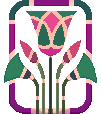
Sunday, February 1, 2015
Hathor-headed Clappers (Expanded March 14, 2015)
2:58am
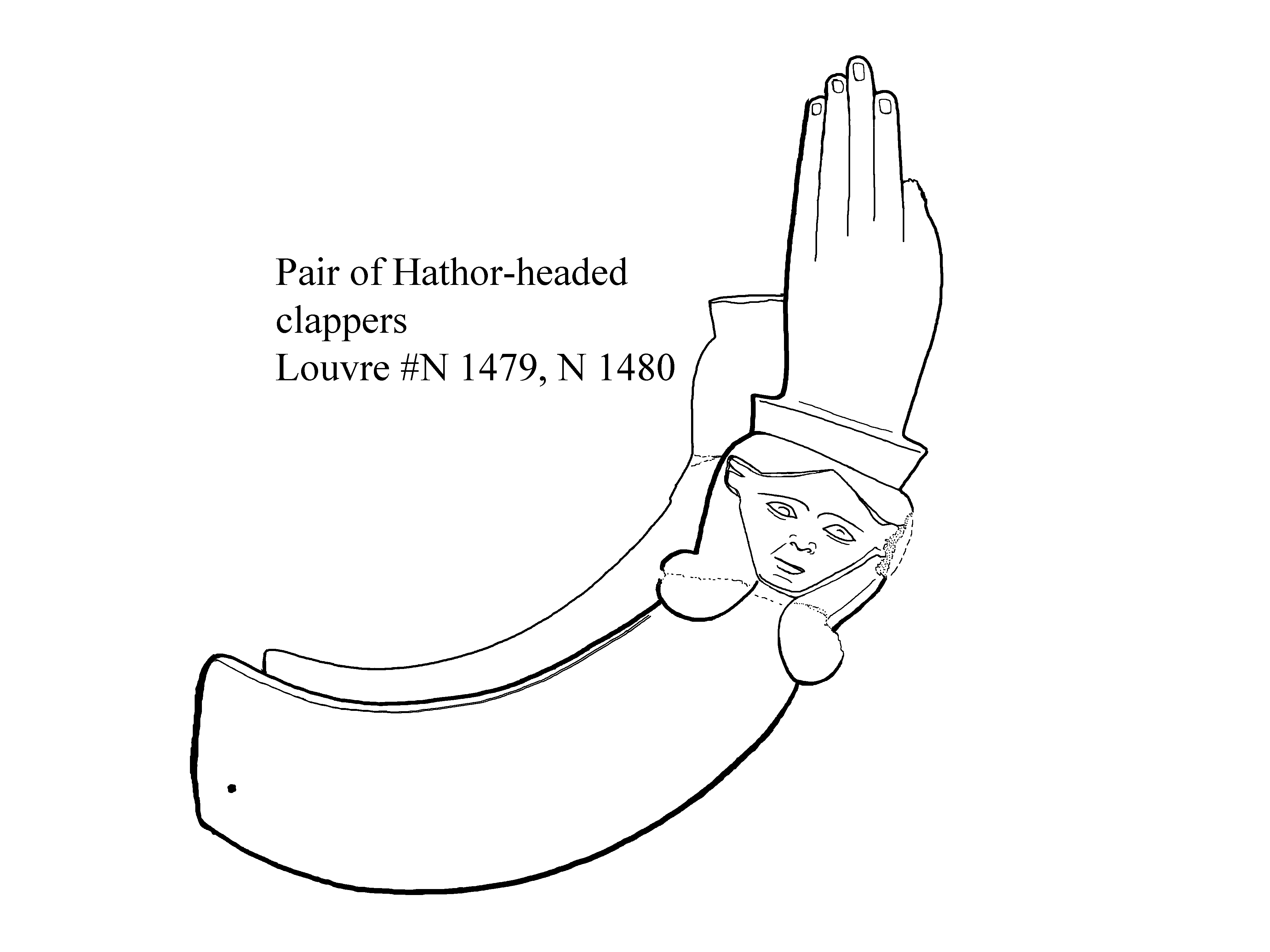
Pair of clappers with the head of the goddess Hathor
Middle or New Kingdom? 2033 - 1069 BCE
Ivory from hippopotomus teeth, Height: 35,40 cm.; Length: 7,40 cm.
Louvre, # N 1479, N 1480
Traced from a photo by Heidi Kontkanon
Andrea "Amberinsea" has a view of the front side of the other clapper
I'm finding the imagery for the goddess Hathor rich and varied. These two clappers are curved, due to the shape of the hippopotamus ivory with which they were carved. Each end was originally decorated with the head of the goddess Hathor and a slender hand, although the one clapper has since lost its hand. In antiquity they would have been held together by a cord inserted through a tiny hole each has at the end. They would have been used as a percussion instrument by clapping them together.
Clappers like these "seem to be the first musical instruments to have been depicted on vases, as early in the predynastic period. Clappers with hands appeared in the Middle Kingdom, yet it seems that the most beautiful of these objects can be dated to the New Kingdom, particularly those representing a head of Hathor. Music and dance played an important role in ancient Egypt..." (From the museum website)
Bleeker quotes an excerpt from a "song sung by the seven Hathors to the great goddess Hathor":
"We laud thee with delightful songs,
(Printable version).
Additions of March 14, 2015:
Searching through the Global Egyptian Museum archives turned up two more examples of Hathor-headed clappers. Rijksmuseum Van Oudheden has a pair:
The Pilizaeus Museum has another example:
These two photos at
GEM
Searching the British Museum's website turns up another Hathor-headed pair:
The Cairo museum has two examples:
"Although the respective sister pieces of these two isolated clappers are lost, they nevertheless serve to illustrate characteristic types from among the many and varied examples known. The clapper with the broken handle shows a fairly well modelled woman's head surmounted by a right hand complete with fingernails. The other takes the form of a bent arm at the end of which a Hathor head with cow's ears, curled wig and bead collar supports a structure flanked by two horns. A tapering left hand, adorned at the wrist with two incised bracelets, elegantly extends the curve of the arm. The hole pierced through the bottom of this arm shows that the clappers were originally attached by means of a string."
"Priests and priestesses of Hathor owned these instruments and used them to keep rhythm at dances performed in the goddess' honor. In some rare examples, the head of a woman replaces that of Hathor." But perhaps, even though the woman is not wearing the cow's ears or the usual headdress of Hathor, this head still represents Hathor?
Quotes are from, and photo adapted from the one in, _Official Catalogue: THE EGYPTIAN MUSEUM CAIRO_, edited by Mohammed Saleh and Hourig Sourouzian, photographs Jüergen Liepe, translated by Peter Der Manuelian and Helen Jacquet-Gordon, © 1987 Verlag Philipp von Zabern, Mainz.
Rather telling, the Met Museum has a pair of clappers from the Amarna era, which have only the hands and not the head of Hathor. (For those not in the know, the Amarna era was the reign of Akhenaten, who tried to forbid worship of any other deity but the Aten.)
For thou art the mistress of jubilation,
The mistress of music, the queen of harp-playing,
The lady of the dance,
The mistress of the chorus-dance, the queen of wreath-weaving."7
Goddess of Dance, Music and Song, from Hathor and Thoth: Two Key Figures of the Ancient
Egyptian Religion, by Claas Jouco Bleeker, (Page 53)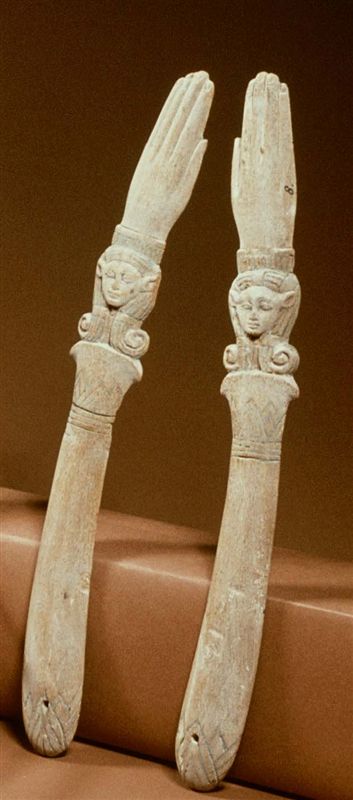
Present location RIJKSMUSEUM VAN OUDHEDEN [06/001] LEIDEN
Inventory number AH 127b-1/2
Dating NEW KINGDOM
Archaeological Site UNKNOWN
Category MUSICAL INSTRUMENT
Material: Said to be "WOOD", but probably ivory
Technique INCISED; SCULPTURED
Height 1.2 cm, Width 3.4 cm, Depth 34.5 cm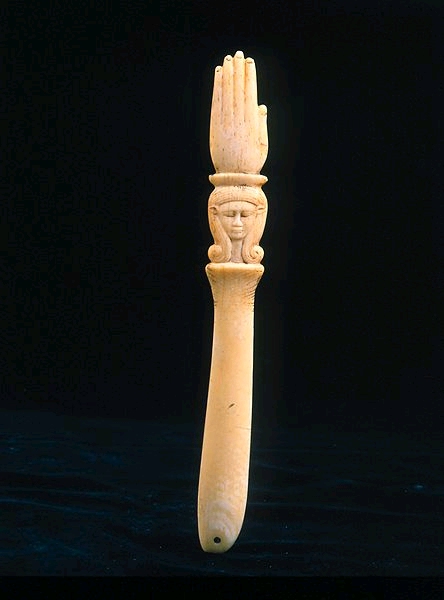
Present location PELIZAEUS-MUSEUM [04/030]
Inventory number 5523
Dating 18TH to 19th DYNASTY
Archaeological Site UNKNOWN
Category MUSICAL INSTRUMENT, PERCUSSION INSTRUMENT: CLAPPER
Material: IVORY
Technique INCISED; SCULPTURED
Height 24.5 cm, Width 2.8 cm, Depth 0.6 cm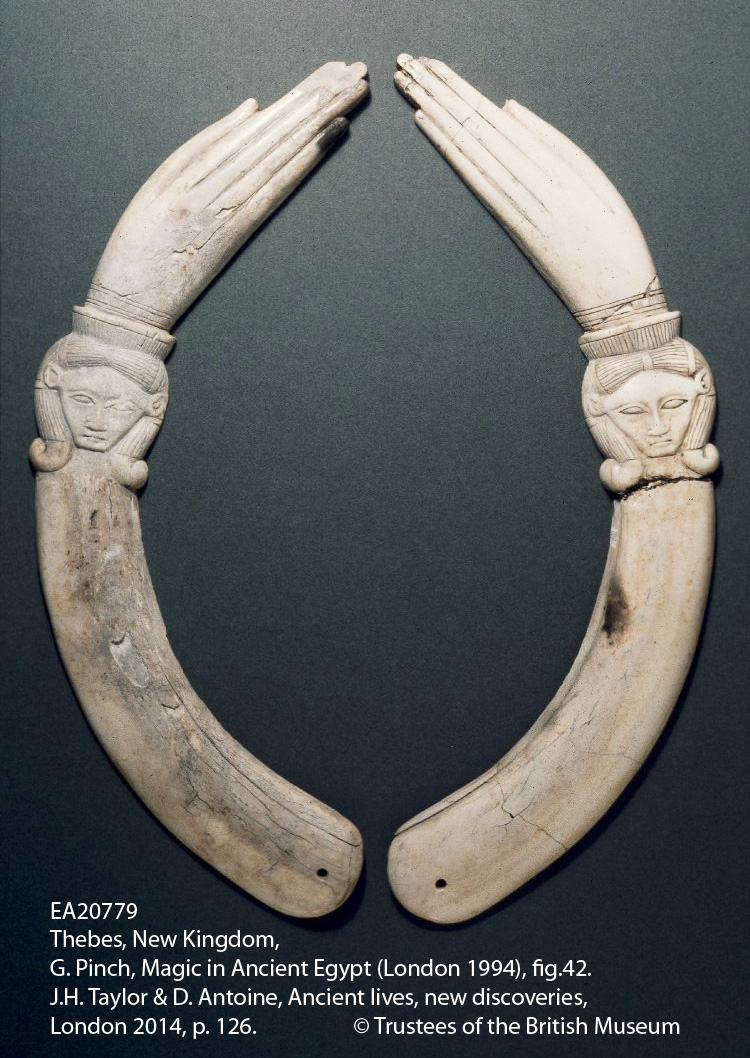
British Museum, #EA20779
New Kingdom
Findspot Found/Acquired: Thebes (?)(Africa,Egypt,Upper Egypt,Thebes (Upper Egypt - archaic))
Materials: "bone" (aka ivory)
Length: 33.5 cm, Width: 5.1 cm, Depth: 1.5 cm
Description: "Curved clapper in form of a right hand with Hathor head below: the elongated thumbs and fingers have the nails carved out, though these are missing on the first two fingers; there is a slight depression between each of the digits. The wrist shows an elaborate bracelet. The Hathor head has a curled wig held back in seven places and is surmounted with a decorative frieze. The curved handle is rounded at the end and pierced with a hole." (Info and photo from museum website)
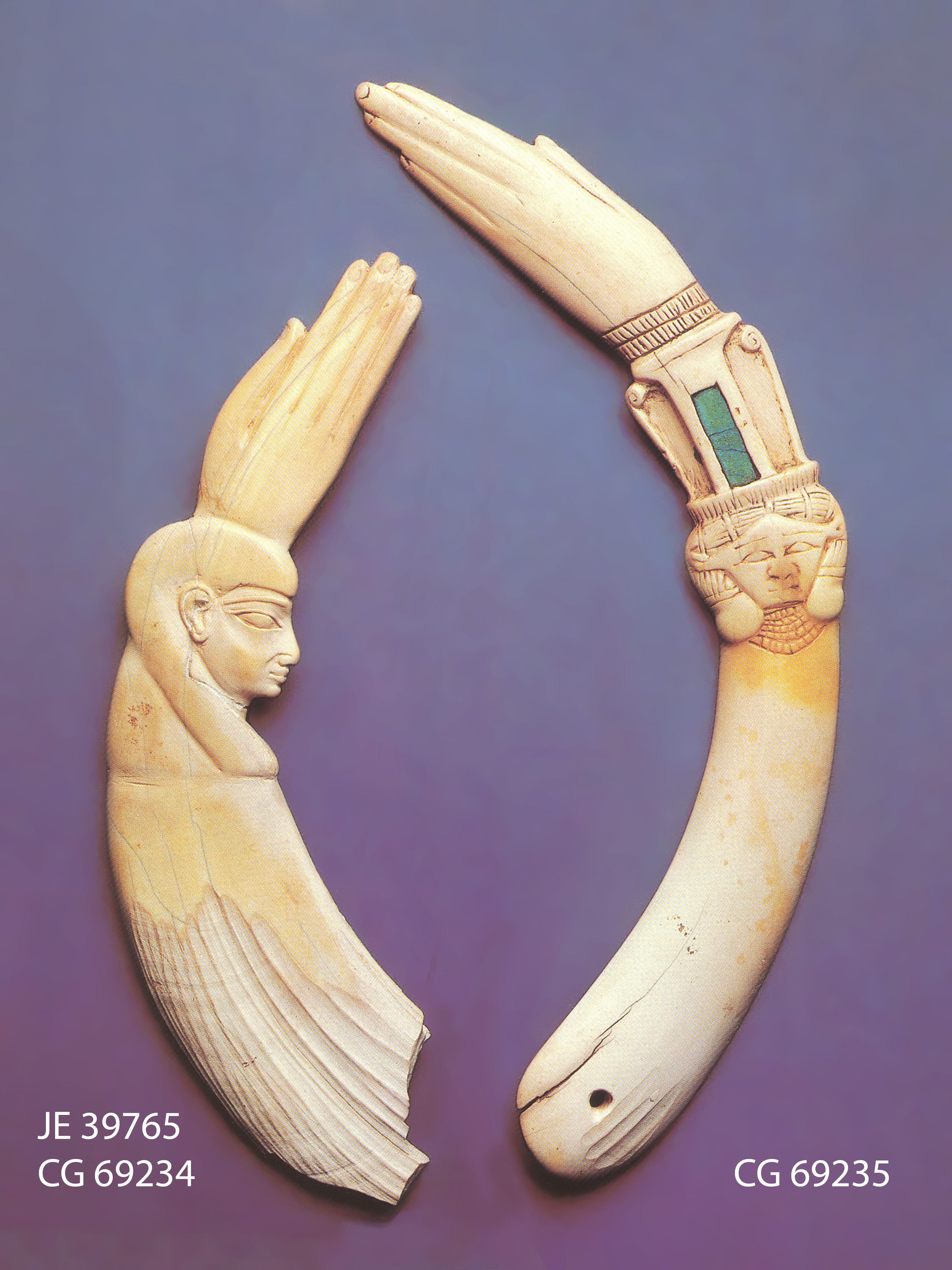
Left: Middle or New Kingdom
L. 19 cm; W. 4.5 cm; Diam. 0.7 cm
Abydos, excavations of Garstang, 1908
Accession no. either JE 39765 or CG 69234
Right: L. 22 cm; W. 3.5 cm
Provenance and date unknown
Accession no. CG 69235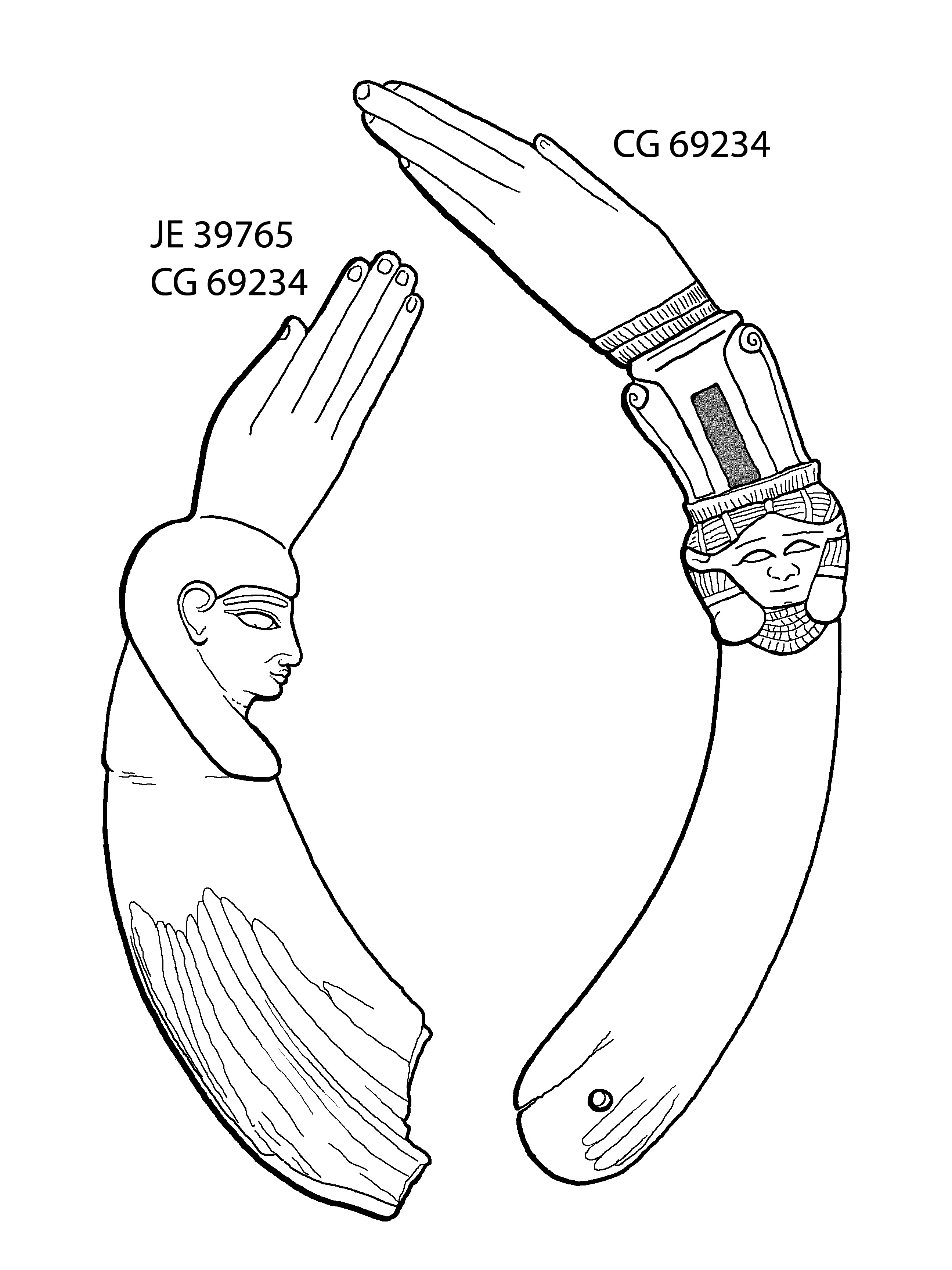
I was able to make a trace from my adjusted photo scan, printable underneath
Clappers are so widely used since the very beginnings of the ancient Egyptian culture that "Naqada vases often show scenes of dancers with upraised arms, accompanied by the rhythm of clappers."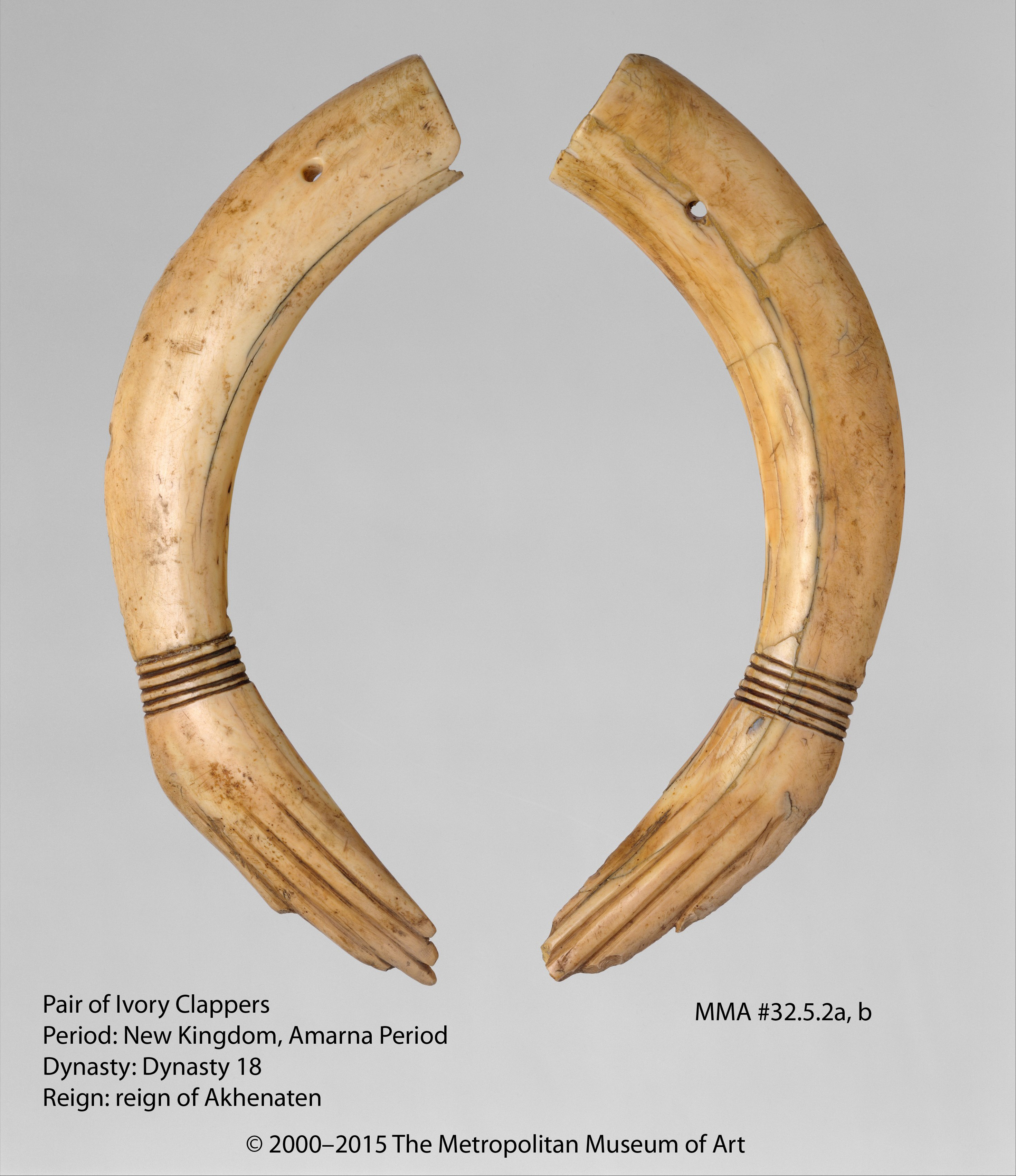
Pair of Ivory Clappers
New Kingdom, Amarna Period, Dynasty 18, reign of Akhenaten, ca. 1353–1336 B.C.
From Egypt, Middle Egypt, el-Amarna (Akhetaten); inc. el-Hagg Qandil, King's House at Amarna, Pit south of the pond, Egypt Exploration Society excavations, 1931–2
Medium: Hippopotamus ivory
Dimensions: max. L. 21.5; max. h. as resting 2 ; max w. as resting 3.6 cm (8 7/16 x 13/16 x 1 7/16 in.)
Credit Line: Gift of Mrs. John Hubbard and Egypt Exploration Society, 1932, Accession Number: 32.5.2a, b
These clappers "were found in a miniature coffin at Amarna", (Info and photo from museum website)